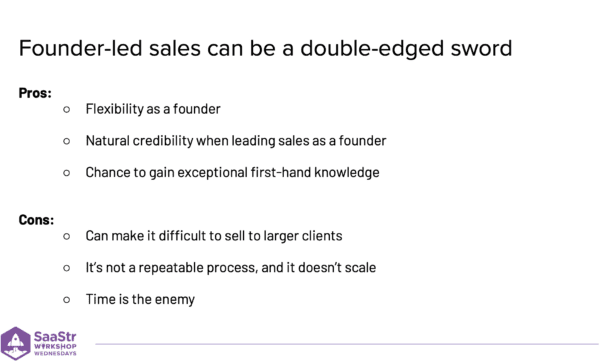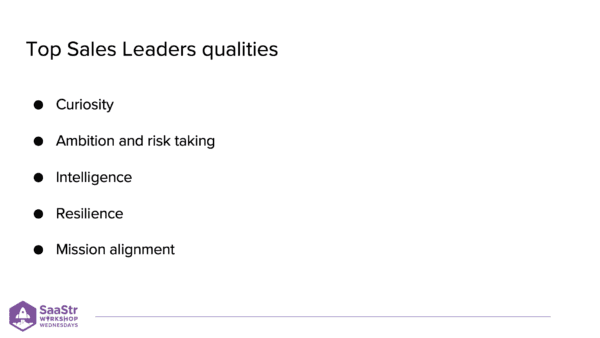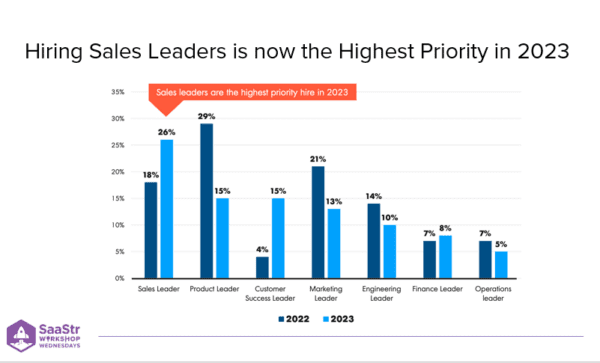On a sales front, how do you evolve past founder-led sales, or together with it, so that you can scale your organization?
Founder-led sales can be an immense strength and rapidly become a limiting factor.
In last week’s Workshop Wednesday, held every Wednesday at 10 a.m. PST, Laura Connell, Partner at Atomico, shares how to scale beyond founder-led sales on your path to Series B.
It’s been an extraordinary past 12 months, and Laura notes that it’s exciting to see how quickly things have come back in the last four weeks.
The Founder-Led Sales Era
When you’re first starting out, and have that initial product-market fit and tight feedback loops with champions and customers, there are many pros to founder-led sales.
But founder-led sales can be a double-edged sword.
Let’s look at the pros and cons
Founder-led Sales Pros:
- Flexibility as a founder in terms of how you craft messaging, pricing, etc.
- Natural credibility when leading sales as a founder — particularly if it’s a more technical product with technical buyers.
- The chance to gain exceptional first-hand knowledge — the initial feedback loop is why it’s one of the strongest models in the beginning. Early first-hand knowledge leads to rapid fixes to the product, pricing, and packaging.

Founder-led Sales Cons:
- It can make it difficult to sell to larger clients. At some point, you have product market fit, and you’re ready to scale and cross that chasm into the longer tail of customers.
You want to move away from founder-led sales here because Enterprise might view your involvement as a poor use of your time and a sign that you haven’t scaled your operations appropriately.
- It’s not a repeatable process, and it doesn’t scale. At some point, you run out of hours in the day. As you scale, your understanding of markets and customers may not be as good as the next salesperson you hire.
- Time is the enemy. As you scale, founder-led sales isn’t a good use of your time. You don’t need to be in every conversation. At later stages, founders continue to be visionaries and closers, but preserving your time is the single most important thing that you have to do.
When going through the founder-led sales era, you learn so much and have the adaptability and flexibility to negotiate things.
In the early stages, you want to be involved for a variety of reasons.
- To understand the market and customer you’re serving, including their pain points.
- To understand the curve of adoption and growth and gain valuable insights into KPIs to track, the right pricing models to adopt, etc.
- Founders are passionate and visionary in what they’re trying to build. No one will believe in your product as much as you do, and nobody has thought about your product for as many hours as you have.
- Founders have refined the narrative around the product and can communicate it clearly and with a depth of knowledge that no one else will have in the early days.
But the path to Series B moves beyond founder-led sales. It’s time to adapt so you can scale your organization.
How to Scale Your Sales Team on the Path to Series B
So, now you know that to scale your organization, you must also scale yourself across all functions.
More often than not, sales and GTM are the limiting factors for growth.
And how you scale your sales team is the single biggest optimization problem from a functional perspective.
How do you do it? What do you look for?
Usually, once you’ve done Series A, you have a good sense of your customer.
So, what do you look for in the people you need to hire? What makes a great salesperson?
Laura generally finds that it’s a combination of different traits. Some of the most common characteristics of a great sales leader include:
- curiosity
- ambition and risk-taking
- intelligence
- resilience
- mission alignment
The top salespeople are worth their weight in gold and have a hunger to learn.

Ambition and risk-taking are particularly critical in a salesperson because they’re willing to get in the weeds and drive growth in the field.
You want people willing to roll up their sleeves and work hard.
Laura’s secret?
Don’t automatically go for the CRO-type profile of a senior person.
Instead, start with a VP of Sales or someone a bit younger with some experience and a hunger to build their career.
Mission alignment is also absolutely critical.
As you scale, every person beyond the existing founding team can make or break the organization, particularly if they’re externally facing.
So, make sure they’re fully mission-aligned and understand your end vision and what you’re trying to do.
How To Ensure Sales Leaders Are Mission-Aligned
You need to be clear on what your mission is and communicate it effectively to anyone coming in. Test for it during interviews and onboarding.
In today’s market, the most important roles are logically sales leaders. 
Competition for good sales leaders has increased.
When everything is up and to the right, it can be harder to tell the difference between good and average salespeople.
In an environment where that’s not the case, you can see the difference in performance and easily identify outperformers.

On the flip side of revenue growth, you don’t want the bottom to fall out of your customer base.
While it’s good to focus on hiring great salespeople to drive net new revenue growth, you also need to think about how to drive customer success and customer retention.
You have to incentivize sales reps to make that a key priority for them.
Let’s imagine for a second…
You’re in a world where you’ve hired a salesperson, and you’ve only incentivized them on net new ACV.
Well, of course, they might be over-indexing on driving initial ACV higher than necessary, which might lead to lower retention over time.
Instead, it’s worthwhile to dually incentivize reps.
Look at how you structure compensation.
- 80% could be incentivized based on net new
- 20% could be on renewals
Laura says this is something to be wary of as you scale and ramp your sales teams up. Make sure the bottom doesn’t fall out by driving retention, customer success, and expansion.
Key Takeaways
You can’t truly replicate founder-led sales, nor would you want to.
Founders need to recognize the need to scale their organization and themselves and move into a more strategic function.
You don’t want to be in the weeds at every part of the funnel.
Set up the leading indicators for what success looks like, and not just indicators around closing deals.
What are the North Stars?
You need to put a lot of thought into how you structure pricing, compensation, etc.
Focus on building your company mission and culture.
Have a very clear idea of what your guardrails are. You need people who are flexible and responsive in conversations with customers but with a set of guardrails on culture and mission that provide information on what they can and can’t do.

